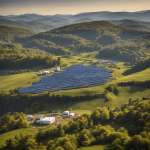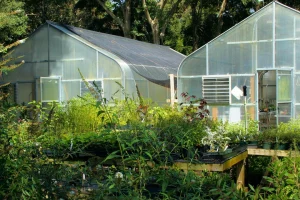
A groundbreaking proposal is set to reshape the American landscape by reinvigorating the spirit of an age-old tradition. The 2025 Homestead Act addresses modern challenges by offering land to those willing to build a life on it. This initiative seeks to transform underutilized areas into thriving communities, echoing the success of its 19th-century predecessor. The proposal has garnered attention from policymakers, economists, and citizens eager to explore its potential impact on the nation.
A Modern Solution to Contemporary Challenges
The 2025 Homestead Act emerges when America faces pressing issues such as urban overcrowding, housing shortages, and economic inequality. Inspired by the original Homestead Act of 1862, which provided land to settlers in exchange for developing it, this modern iteration aims to distribute land parcels to individuals and families willing to cultivate and sustain them. Advocates believe this could alleviate housing pressures and stimulate economic growth in underdeveloped regions.
Proponents argue that this proposal could unlock vast swathes of unused federal land, offering new opportunities for sustainable living and economic revitalization. By encouraging migration to less populated areas, the act could ease the strain on urban centers while fostering new communities. Critics, however, caution against potential logistical and environmental challenges, underscoring the need for careful planning and execution.
Historical Roots and Modern Adaptation
The concept of homesteading has deep roots in American history. The original Homestead Act, signed by President Abraham Lincoln in 1862, was pivotal in westward expansion. It granted 160 acres of public land to settlers who agreed to improve and cultivate it for at least five years. By the early 20th century, millions of acres had been claimed, transforming the American frontier.
The modern proposal seeks to adapt this framework to contemporary needs. While the original act focused on agricultural development, the 2025 version emphasizes sustainable practices and technological integration. This includes renewable energy solutions, modern infrastructure, and digital connectivity, ensuring that new communities are environmentally conscious and economically viable.
Economic Implications and Opportunities
Economists highlight the potential economic benefits of the 2025 Homestead Act. The initiative could create jobs, boost local economies, and increase tax revenues by fostering new communities. Building homes and infrastructure would stimulate demand for materials and labor, providing a much-needed boost to industries still recovering from economic downturns.
Additionally, the act could serve as a catalyst for innovation in sustainable living. By prioritizing eco-friendly practices, it encourages the development of green technologies and reduces the carbon footprint of new settlements. This aligns with broader national goals of combating climate change and promoting environmental stewardship.
Social Impact and Community Building
The 2025 Homestead Act has significant social implications beyond economic considerations. It offers a chance to build diverse, inclusive communities from the ground up, fostering a sense of belonging and shared purpose. For many, the opportunity to own land and create a home represents the fulfillment of the American Dream—a chance to secure a better future for themselves and their families.
However, successful implementation requires addressing potential obstacles, such as access to education, healthcare, and other essential services. Ensuring new communities are well-equipped to meet residents' needs is crucial to their long-term viability. Policymakers must collaborate with local governments, businesses, and community organizations to provide support and resources.
Looking Ahead: The Path to Implementation
As the 2025 Homestead Act gains traction, discussions continue around its potential impact and feasibility. Key stakeholders, including government officials, urban planners, and environmentalists, are working to refine the proposal and address concerns. The success of this ambitious initiative hinges on careful planning, collaboration, and a commitment to sustainable development.
If implemented effectively, the act could transform underutilized lands into vibrant communities, offering a new chapter in America's ongoing story of growth and innovation. By embracing the spirit of the original Homestead Act while adapting to modern realities, this proposal presents a unique opportunity to reshape the nation's future.
The 2025 Homestead Act is a testament to America's enduring capacity for reinvention. Addressing contemporary challenges with a nod to historical precedent offers a vision of hope and possibility. As the nation navigates the complexities of the 21st century, this initiative could serve as a beacon of progress and a reminder of the power of collective ambition.

Lucy Davis is an enthusiastic and passionate young writer who has a knack for bringing stories to life. With a fresh perspective and an insatiable curiosity, she delves into the world of smart home technology, interior design, and lifestyle trends, keeping readers engaged and informed.
















